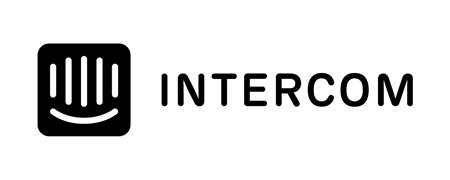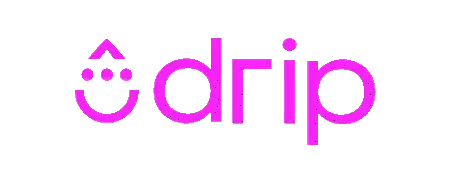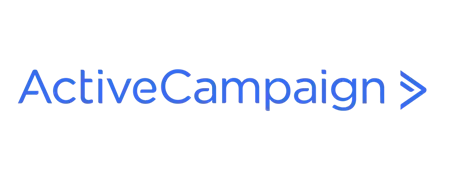Content marketing is about creating and sharing valuable, relevant, and consistent content to attract and retain your target audience, ultimately driving them to take action (eventually buying what you are selling).
This is part 3 in my 9 part series to help coaches find the best ways to attract and retain new clients. Links to the other parts of the series at the bottom of the post.
Content marketing is one of the best scalable ways to establish authority, build trust, and expand your reach. It includes blogging, video content, social media, and podcasting, all of which can help you share your expertise, answer common questions, and connect with your audience on multiple platforms. You are probably already successfully doing this within your existing customer base by sharing your knowledge with them. You might not think of that as content marketing but the goals and strategies are the same. The power of content marketing is the ability to reach outside of your existing circle and build trust with potential clients who otherwise may not be aware of your business.
Continue reading or listen to the audio version on the podcast or watch the video version on Youtube. Both also embedded below.
Fighting "The Resistance"
Before we delve into the tips and tricks of creating content, let's quickly cover something that might have stopped your progress on content creation in the past.
Steven Pressfield, in The War of Art, describes 'Resistance' as the invisible force that actively works against creativity and progress. He writes, "Resistance will tell you anything to keep you from doing your work. It will perjure, fabricate; it will seduce, bully, cajole. Resistance will assume any form, if that's what it takes to deceive you. It will reason with you like a lawyer or jam a nine-millimeter in your face like a stickup man. Resistance will pledge anything to get you to stop doing what you were born to do."
As a coach, you know that athletes experience resistance—sometimes it's physical fatigue, sometimes it's mental barriers like self-doubt or procrastination. The same happens with content marketing. You might feel like you don’t have time, that your ideas aren’t good enough, or that no one will care about your content. Just as athletes push through tough training sessions to become stronger, you need to push past Resistance in content creation.
Don't Focus on Quality at the Start
Focusing too much on the quality of your content in the beginning will likely derail your strategy. It's fine to have standards but creativity is one of those skills that you need to build up by putting things into the real world, getting feedback, iterating and getting better at the craft. Don't get hung up on having the right camera equipment, or having professionally polished and edited videos. That process can be refined and improved after you've developed your skills, gained confidence and have some momentum behind you.
Here is a simple exercise to prove my point. Find a content creator you like who makes good content, scroll a long way back into their feed and you will likely see that their content was probably not that good to begin with but has improved over time to the level you've come to enjoy now.
Consistency
Just like training for an endurance event, content marketing requires a structured approach. You wouldn’t have your athletes train randomly and expect peak performance, and the same principle applies to content creation. A well-planned schedule ensures steady progress, helping you build trust and authority over time. Sticking to a schedule prevents gaps in engagement and keeps your audience consistently connected to your brand.
Preparation
Creating a list of content ideas to draw from will help maintain creativity and reduce the stress of coming up with topics on the spot. This way, when the time comes, you can quickly grab an idea and create content without the mental load of having to think of a good topic. If you are anything like me, your ideas come to you at any time other then when you sit down to type one out.
To be effective, content creation needs to be part of your daily or weekly routine, much like how you schedule training plans for your athletes.
Types of Content to Share
To attract and convert potential clients, your content should align with where they are in their decision-making process. The buyer's journey typically consists of three key stages: Awareness, Consideration, and Decision. Each stage requires different types of content to nurture your audience effectively.
Awareness Stage (Unaware → Problem-Aware)
At this stage, potential clients don’t yet know they need a coach, or they are just starting to recognize a challenge they want to solve. Your content should focus on education and inspiration, helping them identify their problem and positioning yourself as a trusted source of knowledge.
Content Types:
- Blog posts answering common questions (e.g., "Why Do Runners Get Injured? Common Mistakes and How to Avoid Them")
- Social media posts sharing training tips and motivational stories
- Short-form videos (TikTok, Instagram Reels) debunking endurance training myths
- Infographics and carousel posts explaining basic concepts (e.g., "How Heart Rate Zones Work")
- Podcast episodes featuring general endurance training discussions
Consideration Stage (Solution-Aware → Evaluating Options)
At this point, potential clients know they need help and are exploring different solutions. Your content should provide deeper insights into your coaching philosophy and methodology, demonstrating how you can solve their problems.
Content Types:
- Long-form blog posts (e.g., "How a Running Coach Can Help You PR Your Next Marathon")
- YouTube videos explaining advanced training techniques
- Case studies and testimonials from past clients
- Webinars or live Q&A sessions about common endurance training challenges
- Email newsletters with detailed training insights and success stories
Decision Stage (Product-Aware → Ready to Buy)
Now, your audience is actively looking for a coach and comparing options. Your content should highlight your unique coaching style, pricing, and services to nudge them toward making a decision.
Content Types:
- Coaching service comparison guides (e.g., "How to Choose the Right Endurance Coach for You")
- Free trials or introductory coaching calls
- Behind-the-scenes content showing your coaching process
- Detailed client success stories with data-driven results
- Limited-time offers or discounts for new clients
Short vs Long Form Content
Short-form content is great for grabbing attention quickly and creating interest, especially on platforms like social media. However, it typically doesn’t provide enough depth to convince someone of your expertise. Use short-form content as a gateway to direct people toward your long-form content—blogs, videos, or podcasts—where you can dive deeper into your expertise and build trust. This strategy allows you to engage potential clients initially and then nurture them with more substantial, value-packed content.
Examples
Short-Form Content Ideas:
- A quick Instagram post with a training tip (e.g., "The biggest mistake runners make with fueling and how to fix it.")
- A 60-second TikTok or Reel explaining a common endurance training myth
- A tweet sharing a key takeaway from your latest blog post
- A carousel post on LinkedIn outlining the top three recovery strategies for endurance athletes
Long-Form Content Ideas:
- A blog post titled "The Science Behind Endurance Fueling: What Every Athlete Should Know"
- A YouTube video breaking down a full marathon training plan
- A podcast episode discussing the nuances of heart rate training zones
- A deep-dive email newsletter covering the psychology of race day performance
Linking Short and Long Form Content Together:
Use short-form content to tease or introduce topics covered in long-form content. For example, an Instagram post about "The biggest mistake runners make with fueling" could briefly highlight the mistake and then direct followers to a detailed blog post explaining solutions. A short TikTok addressing heart rate zones could end with "Want a full breakdown? Check out my latest YouTube video!" This approach ensures that each piece of content serves as a stepping stone, keeping your audience engaged and guiding them toward deeper, more valuable insights.
Distribution
Re-use your content across multiple channels where possible—different people prefer different formats. For example, some may like reading blogs, others might prefer watching videos, and some may enjoy listening to podcasts. Repurposing content helps you reach a wider audience and saves time by maximizing the value of each piece of content. Address common athlete questions through blog posts, videos, social media, and podcasts.
To streamline your efforts, start by creating a long-form piece of content, such as a blog post or a detailed video. From there, extract key insights and repurpose them into bite-sized social media posts, infographics, or short-form videos. For example, a blog about marathon fueling strategies could become an Instagram carousel on key fueling mistakes, a TikTok addressing pre-race nutrition, and a Twitter thread summarizing essential takeaways. This ensures that your message reaches different audiences in formats they engage with most, all while reinforcing your core expertise.
Key Takeaways
- Consistency is key; content marketing works best when it is planned and regular.
- Always have a list of content ideas to draw from when you have an opportunity to create. This will help fight the resistance.
- Just hit publish. Try not to get caught up on focusing too much on quality. Publishing content is like a muscle you need to build up over time. Don't start with the heaviest weights first. As you get better, so will your content.
- Use short form content for attention to direct to your longer content that provides the real value.
- Repurpose content across multiple platforms to maximize reach and save time.
- Focus on answering common questions and addressing the needs of your target audience.
- Use a variety of formats, such as blogs, videos, and podcasts, to appeal to different preferences.
- Content marketing builds trust over time, which is essential before potential clients consider your services.
Next Steps
- Create a list of content ideas in a spreadsheet or other project management tool. I use Notion for recording my ideas
- Schedule your content creation into your daily or weekly plan.
Tools
- Training Tilt or other website blog platform
- Keyword research tools for discovering popular topics
- Video recording equipment
- Podcast hosting platforms
- Social media scheduling tools
- A spreadsheet, project management tool or a simple document to store your content ideas.
Related Blog Articles
The Training Tilt blog called Selling Sawdust explains how to make the most of what you’ve already created. By repurposing content for blogs, videos, or podcasts, you can save time while reaching different audiences who prefer various formats. It’s a smart way to stay consistent across platforms without constantly starting from scratch.
The article on the Training Tilt blog Creating Blog Posts with an AI Assistant offers guidance on leveraging AI to generate valuable content efficiently. This article helps you consistently produce high-quality content, establishing your authority and expanding your reach.
More in this series
- Partnerships
- Social Proof and Testimonials
- Content Marketing (This post)
- Challenges
- Free Consultations ... Coming Soon
- Email Marketing .. Coming soon
- Webinars and Q and A Sessions ... Coming Soon
- Community Networking ... Coming Soon
- Paid Advertising ... Coming Soon
Take our Free "Authentic" Marketing Course for Coaches
Designed for endurance sport coaches. Marketing doesn't need to be pushy. The best marketing simply creates a win-win relationship between you and your customers. Take the simple 6 part course to learn more.













